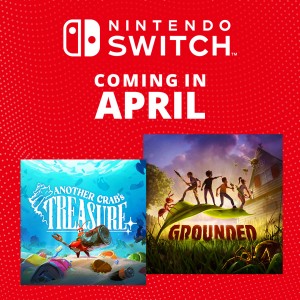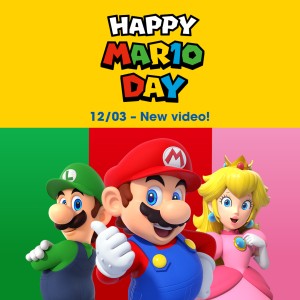Interview: Super Paper Mario
30/08/2007
We recently sat together with Kensuke Tanabe, producer of Super Paper Mario, and Ryota Kawade, chief director of game design and direction on the title that's taking Mario into a new dimension.
NoE: The previous games in the Paper Mario series featured turn-based battles. Why did you decide for a more traditional Mario-style kind of fighting?
Ryota Kawade: "After we developed the previous game, Paper Mario: The Thousand-Year Door, I wanted to make a game that can surprise people with brand new features within the Paper Mario concept.
"Then, when I was drawing up some plans, I came up with an idea of switching between 2D and 3D. I felt that the more traditional Mario-style battles worked better in this game in order to effectively utilise this idea of dimension-swapping, which is why we opted for this style."
Kensuke Tanabe: "I promptly decided to make this game when I received Mr. Kawade's presentation about the system of switching between 2D and 3D worlds. And I also saw eye to eye with Mr. Kawade about the idea that this system would probably fit better with action/adventure-style gameplay. Then, we chose the direction of refraining from the traditional RPG-style battles, even though action skills won't berequired as much as in an original Mario game. I did ask the staff to keep the RPG-like storyline, though.
NoE: How challenging was it to create both a 2D and 3D world for each of the levels? What kind of obstacles did you face?
RK: "First of all, it was a real process of trial and error in order to create a harmonic relationship between the worlds of 2D and 3D. A lot of the side-scrolling worlds from Super Mario Bros. couldn't be transformed into 3D in the first place.
"Plus, we needed to have something that would make players go 'a-ha!' when they see 2D terrains from the 3D perspective, so we thought long and hard in order to effectively create levels in this sense. There were lots of occasions where we went through hard times. For designers, creating one single level, effectively required the efforts of creating two levels! Although it was something we never tried before, I believe we were able to make something exciting."
NOE: Starting the game with the Wii Remote held like an old NES controller and then gradually introducing elements that make use of its capabilities makes you realise all over again just how much the Wii Remote has changed videogaming. Did you get that same sense when you were coming up with ways to integrate the remote in the gameplay?
RK: "Yes. What I find great is that one single Wii Remote can realise such a variety of controls. This game had originally been a GameCube title, and it used almost all the buttons of the GameCube controller, but in the end we managed to realise these controls with just one Wii Remote. I think this proves that the Wii Remote is pretty flexible!
"Furthermore, the actions in the game became more unique by making use of the pointer and motion sensor of the Wii Remote."
NoE: Which of the four main playable characters in the game is your favourite to play with?
RK: "I think for me Mario is the easiest to use, but my favourite character is Luigi. I'm very much satisfied because we could make him take an active role in this story!"
NoE: In Paper Mario: The Thousand-Year Door for GameCube, there was a lot of variety in the chapters, for example one level was a detective mystery on a train. Which are your favourite 'assignments' for Mario in this game?
RK: "I like a story in chapter 2 where you look for a person who lives in a large mansion. On the way, there is an event that puts Mario and his friends in debt. They are going to have a hard time in order to pay back their debt. Maybe you will get a little fed up accomplishing this, but I hope you can share this hardship with Mario and his friends!"
NoE: For older gamers playing Super Paper Mario, there are a lot of references to gaming from a bygone era, and the gameplay has its roots in the 'traditional' platform game genre. Do you think there are lessons to be learned by looking at how games used to be made in the past?
RK: "By now, so many games have been made, and in this process, game development has evolved and become more sophisticated. However, in time and with trends changing, there are things that have been forgotten or gone out of style, even they are excellent gameplay mechanisms.
"From this perspective, there are lots of things I can learn from the games of the past. I think now is the time where we need to try to create things without being chained by narrowly defined, established game genres."
NoE: Humour is a key element in the Paper Mario series. Where do you draw your inspiration from in coming up with the situations and the dialogue?
RK: I have never thought where my inspiration came from, however I am sure that I have been affected by various things I saw, including books, comics, movies, animations and games. And I often take a hint as well when I am talking with staff members. When I am working on game development, especially when making ideas of situations and dialogues, I am always making a conscious effort thinking about how we can entertain and surprise players.
NoE: Did you speak to Mr. Sakurai (developer of Super Smash Bros. Brawl) about a Paper Mario stage in Super Smash Bros. Brawl?
KT: "Unfortunately, neither Mr. Kawade nor I had that opportunity."
NoE: How do you see the future of the Paper Mario franchise? Also, are there any plans for a Paper Mario game for Nintendo DS?
RK: "I myself cannot anticipate what the Paper Mario series will be like in the future. Not being able to know the future makes me excited. In any event, I want to make something that can surprise people who see it. I do not have any specific plan for Nintendo DS either, but I think we can make a unique Paper Mario if we make use of the capabilities of the Nintendo DS."
KT: "I think that with Super Paper Mario we accomplished to make a great game that fits well into the Paper Mario universe. If we come up with another unique and influential idea, better than the feature of switching between 2D and 3D dimensions, then we may start to create new Paper Mario title, however, we are not working on anything concrete at this point in time.
"We would be very pleased if players have a good time with Super Paper Mario for now!"
Super Paper Mario is in shops 14 September, only on Wii.





